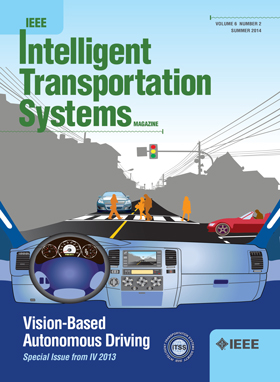Adaptive Feature-Manipulated Vehicle and Pedestrian Detection in Infrared Images
IF 7.9
1区 工程技术
Q1 ENGINEERING, CIVIL
IEEE Transactions on Intelligent Transportation Systems
Pub Date : 2025-03-05
DOI:10.1109/TITS.2025.3545844
引用次数: 0
Abstract
Infrared imaging is widely applied in assisted driving systems to enable night vision for sensitive targets such as vehicles and pedestrians. However, the detection accuracy of these targets is limited on lightweight detection networks due to their coarse color and texture characteristics rendered in infrared images. To solve this problem, we propose an adaptive feature-manipulated network (AFMNet) for accurate vehicle and pedestrian detection in infrared images. First, a refined spatial pooling module that uses one-dimensional convolution is proposed to establish local and channel feature mapping under different receptive fields so that different fine-grained features are fused. Second, the shuffle manipulation module is designed which includes slicing and shuffling to manipulate the spatial and channel features so that the information loss problem caused by conventional convolutional downsampling is overcome. Third, the adaptive connection of features at different scales using learnable parameters is proposed, and then the target features are reinforced by location and channel calibration branches. The experimental results show that AFMNet achieves the best performance in terms of average detection accuracy of 86.4%, model size of 5.3MB, and detection speed of 48FPS on GTX 2080Ti.求助全文
约1分钟内获得全文
求助全文
来源期刊

IEEE Transactions on Intelligent Transportation Systems
工程技术-工程:电子与电气
CiteScore
14.80
自引率
12.90%
发文量
1872
审稿时长
7.5 months
期刊介绍:
The theoretical, experimental and operational aspects of electrical and electronics engineering and information technologies as applied to Intelligent Transportation Systems (ITS). Intelligent Transportation Systems are defined as those systems utilizing synergistic technologies and systems engineering concepts to develop and improve transportation systems of all kinds. The scope of this interdisciplinary activity includes the promotion, consolidation and coordination of ITS technical activities among IEEE entities, and providing a focus for cooperative activities, both internally and externally.
 求助内容:
求助内容: 应助结果提醒方式:
应助结果提醒方式:


